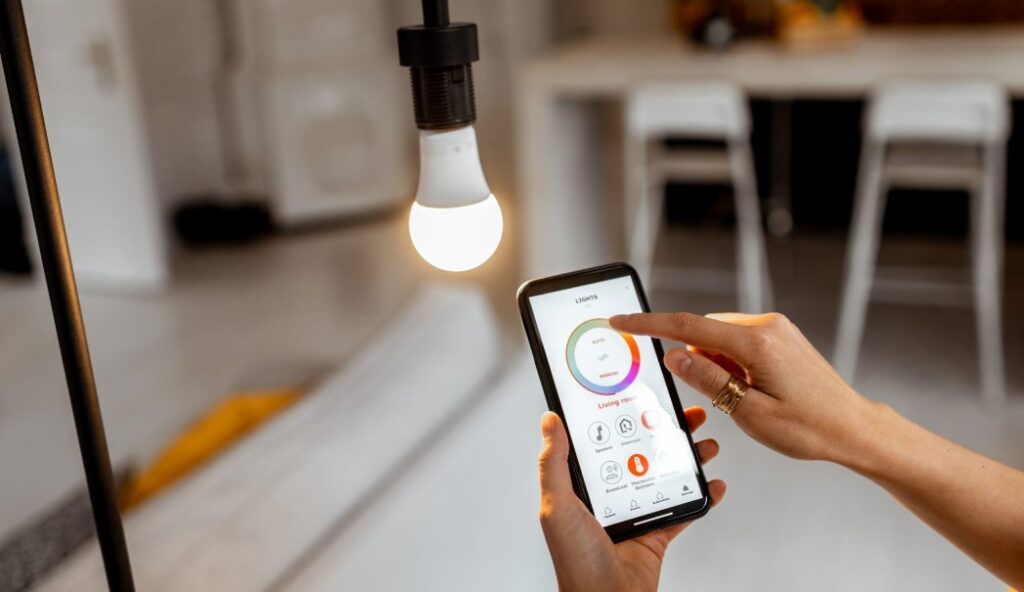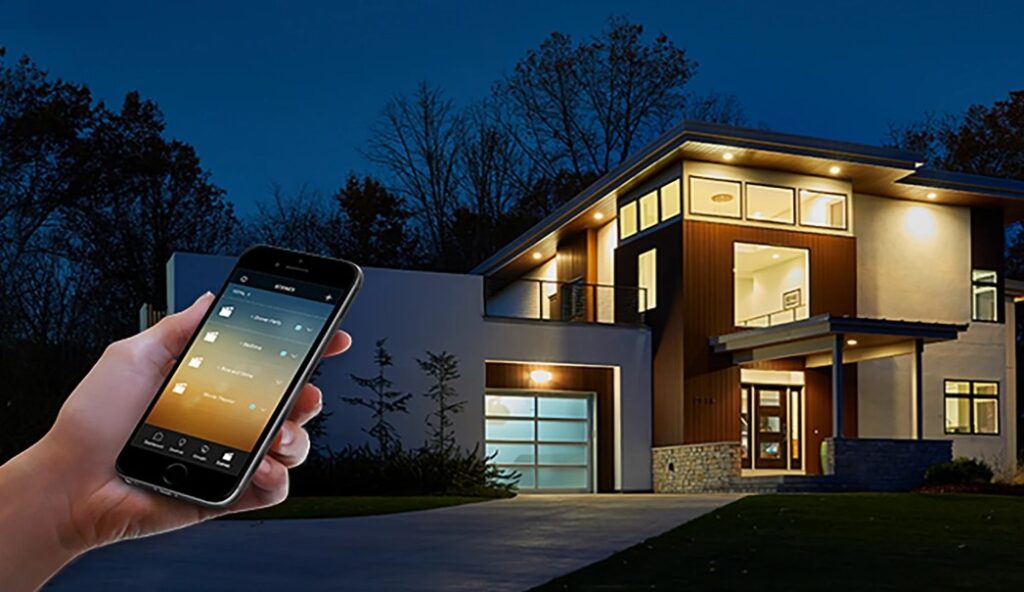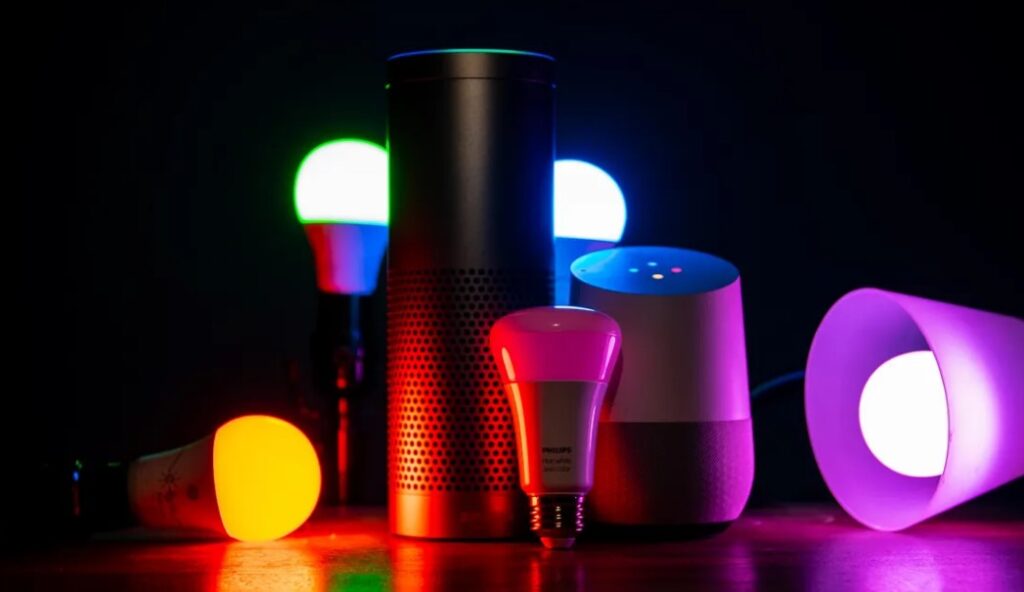Smart Lights: Everything You Need to Know in 2024
Smart lights have transformed the way we illuminate our homes, offering more than just basic lighting functionality. These innovative products combine advanced technology with energy efficiency, customization, and convenience. Whether you want to enhance your home security, create the perfect atmosphere for different occasions, or automate your lighting to fit your lifestyle, smart lights are the solution.
In this article, we’ll explore the various benefits of smart lights, highlight the top products available in 2024, and help you navigate the key features that you should consider when choosing the perfect lighting system for your home.
What Are Smart Lights?

Smart lights are a category of lighting systems that offer the ability to control the light source through digital means. These lights are generally LED-based and can be connected to a network, allowing users to control them remotely via apps, voice commands, or even sensors that detect movement or light changes. Smart lights are typically used in home automation, offering convenience, flexibility, and the ability to set personalized lighting scenarios.
What sets smart lights apart is the ability to offer advanced features like adjustable brightness, color-changing capabilities, and scheduling. For example, you can dim the lights for a movie night, change the color to match your décor, or schedule them to turn on at sunrise and off at sunset. Most smart lights are energy-efficient and use less power than traditional bulbs, saving you money on your energy bills over time.
Smart lights are compatible with popular smart home ecosystems such as Amazon Alexa, Google Assistant, and Apple HomeKit, meaning they can be integrated into your larger home automation system. This provides a seamless experience where you can control lights, thermostats, and security systems all in one place.
Benefits of Smart Lights

Convenience and Control
One of the most significant benefits of smart lights is the level of convenience they provide. With traditional light bulbs, you have to manually flip a switch or pull a cord. Smart lights, on the other hand, allow you to control your lights remotely with a mobile app, voice commands, or even through automated routines.
With voice assistants like Amazon Alexa or Google Assistant, you can control your smart lights without ever lifting a finger. Simply say, “Alexa, turn off the living room lights,” or “Hey Google, set the bedroom light to blue.” This feature is especially useful when you’re in the middle of cooking, lounging, or when your hands are full.
In addition, smart lights can be programmed to follow routines. For instance, you can set the lights to gradually brighten in the morning to simulate a sunrise, helping you wake up more naturally. You can also schedule your lights to turn off automatically when you leave the house, reducing energy consumption.
Energy Efficiency
Smart lights, particularly those that use LED technology, are far more energy-efficient than traditional incandescent bulbs. A smart LED light uses about 75% less energy than an incandescent bulb and lasts much longer, which translates into substantial long-term savings.
Many smart lighting systems also offer the ability to automate the lights. For example, you can set them to turn off when no one is in the room, or adjust the brightness based on the time of day, which further enhances energy efficiency. Some smart lighting systems even offer a feature that adjusts the brightness automatically based on natural light levels, ensuring that your home is always well-lit without wasting energy.
Moreover, the long lifespan of smart LED lights means fewer replacements, which is both cost-effective and environmentally friendly. This makes smart lighting an excellent choice for those looking to reduce their carbon footprint.
Security and Automation
Smart lighting systems can be integrated into your home security setup, providing additional layers of safety and protection. With features like motion detection and remote control, smart lights can make it look like someone is home even when you’re away, thus deterring potential intruders. For example, you can schedule your lights to turn on and off at random intervals or based on motion detected by smart security cameras.
Motion-sensing smart lights are especially useful for outdoor areas, such as front or back yards, driveways, or entryways. These lights will automatically turn on when they detect movement, brightening the area and alerting you to any potential danger. This feature can help increase the safety of your home, making it less inviting to burglars and intruders.
Moreover, smart lighting can be automated to work with other smart home devices. For instance, you could set your lights to turn on when your security camera detects motion or when your smart lock is unlocked, adding another layer of convenience and protection.
Customization and Ambiance
One of the standout features of smart lights is their ability to customize the ambiance of any room. Unlike traditional bulbs, which typically only provide one color of light, smart bulbs can change color and brightness to match your preferences. Whether you’re looking for a soft, warm glow for a relaxing evening, bright white light for a productive work session, or a fun color for a party, smart lights can create the perfect setting.
Smart lights offer a spectrum of 16 million colors, giving you endless options for adjusting your home’s lighting. Some systems allow you to adjust the color temperature of white light, ranging from a warm, yellowish hue to a cooler, bluish light. This can be especially useful for activities like reading, working, or winding down at night.
Additionally, you can sync smart lights with music, movies, or even games, creating an immersive experience. This feature is often used with smart bulbs in entertainment rooms or home theaters, where the lighting can adjust to match the mood of the content being played.
Integration with Other Smart Devices
Smart lighting integrates seamlessly with other smart devices in your home. For instance, you can connect your lights with smart thermostats, security cameras, and voice assistants, creating a fully integrated system that works together to enhance your living environment.
For example, a smart thermostat can detect when you’re home or away and adjust the lighting accordingly. Similarly, smart lights can be synced with smart security cameras so that lights turn on if movement is detected, or lights can be set to flash in the event of an alarm. The integration of these devices helps create a more cohesive and efficient smart home system.
Types of Smart Lights

Smart lights come in various forms to suit different needs and preferences. Each type offers unique features that cater to specific lighting needs, from accent lighting to full home automation. Here’s a breakdown of the main types of smart lights available:
1. Smart Light Bulbs
Smart light bulbs are the most common type of smart lighting solution. These bulbs are designed to fit into standard light fixtures and are available in various shapes and sizes, including A19, BR30, and GU10. Smart bulbs can be controlled remotely via a mobile app or voice assistant (Amazon Alexa, Google Assistant, etc.) and allow you to adjust brightness, color, and even create lighting schedules.
- Examples: Philips Hue White and Color Ambiance, LIFX A19, Wyze Bulb Color.
- Use Cases: Ideal for everyday lighting in living rooms, bedrooms, or kitchens. They offer flexibility in adjusting color and brightness based on different tasks or moods.
2. Smart Light Strips
Smart light strips are long, flexible strips of LEDs that can be placed under cabinets, along walls, or behind televisions to create ambient lighting effects. These strips can be cut to fit specific areas and often come with color-changing capabilities, allowing users to create dynamic lighting setups.
- Examples: Philips Hue Lightstrip Plus, Govee RGBIC Light Strips.
- Use Cases: Perfect for creating a modern ambiance in home theaters, accent lighting in bedrooms, or even illuminating bookshelves or desks.
3. Smart Ceiling Lights
Smart ceiling lights are designed to be installed in the ceiling, providing overhead lighting for larger spaces like living rooms, kitchens, and hallways. These fixtures can vary from pendant lights to recessed downlights and often include features like dimming and color temperature adjustments.
- Examples: LIFX Downlight, Yeelight Smart Ceiling Light.
- Use Cases: Best for full-room illumination and integrating with home automation systems. Ideal for those looking to replace traditional ceiling fixtures with smart alternatives.
4. Smart Outdoor Lights
These lights are specifically designed for outdoor use, offering features like weather resistance and enhanced brightness. Smart outdoor lights can include motion sensors, timers, and color-changing options to improve home security and create a welcoming atmosphere outside.
- Examples: Ring Smart Lighting, Philips Hue Outdoor Lights.
- Use Cases: Great for driveways, patios, and gardens, where both security and ambiance are important.
Each type of smart light offers different benefits and functionalities, allowing users to customize their home lighting system based on their needs.
Top Smart Lights for 2024

1. Philips Hue White and Color Ambiance A19 LED Smart Bulb
Website: Philips Hue White and Color Ambiance A19 LED Smart Bulb
Overview:
Philips Hue has long been a leader in the smart lighting space, and its White and Color Ambiance A19 LED Bulb is no exception. This bulb offers a broad range of features, from adjustable white light to 16 million colors. It’s compatible with Amazon Alexa, Google Assistant, and Apple HomeKit, which makes it incredibly versatile and easy to integrate into any existing smart home setup.
Features:
- Offers 16 million colors and adjustable white light.
- Compatible with major smart home ecosystems like Alexa, Google Assistant, and Apple HomeKit.
- Can be controlled via the Philips Hue app or voice commands.
- Energy-efficient LED technology.
- Requires the Philips Hue Bridge for full functionality (sold separately).
- Supports routines and automation, such as dimming or turning on/off at set times.
Use Case: Ideal for homeowners who are serious about smart home integration. The Philips Hue system offers robust features, including full color control, white temperature adjustments, and seamless integration with other smart home devices.
Pros:
- Extensive color and brightness options.
- Reliable brand with excellent customer support.
- Easy to use and set up with the Philips Hue app.
Cons:
- Requires a Hue Bridge for full functionality.
- Price point is higher than other smart bulbs.
Price: Typically priced around $50 per bulb.
2. LIFX Color A19 Smart LED Light Bulb
Website: LIFX Color A19 Smart LED Light Bulb
Overview:
LIFX is known for providing high-quality, feature-rich smart bulbs at competitive prices. The LIFX Color A19 Smart LED Light Bulb offers 16 million colors, adjustable brightness, and white color temperature, without the need for an additional hub. It’s an excellent option for users looking for a straightforward smart lighting solution with vibrant color output.
Features:
- 16 million colors and adjustable whites.
- No hub required; connects directly to Wi-Fi.
- Works with Alexa, Google Assistant, and Apple HomeKit.
- Energy-efficient with a lifespan of up to 22.8 years.
- Can be grouped with other LIFX bulbs for synchronized control.
Use Case: Great for individuals who prefer a hassle-free installation process and want a vibrant, flexible lighting system. LIFX bulbs are particularly popular in living rooms, bedrooms, and home theaters where lighting is frequently adjusted.
Pros:
- No hub required, simple setup.
- High-quality, deep color options.
- Direct Wi-Fi connection makes it easy to use.
Cons:
- Higher cost compared to budget-friendly options.
- Wi-Fi connectivity can sometimes be inconsistent.
Price: Around $45 per bulb.
3. Wyze Bulb Color Smart LED Bulb
Website: Wyze Bulb Color Smart LED Bulb
Overview:
Wyze has made a name for itself by offering affordable smart home solutions, and the Wyze Bulb Color is no different. This smart LED bulb provides 16 million colors, adjustable white temperatures, and works with Alexa and Google Assistant, all without needing a hub.
Features:
- 16 million colors and tunable whites.
- No hub required; connects directly to Wi-Fi.
- Adjustable brightness (800 lumens).
- Works with Amazon Alexa and Google Assistant.
- Energy-efficient and long-lasting.
Use Case: Perfect for those new to smart lighting or anyone looking for a budget-friendly option to add color and flexibility to their home lighting.
Pros:
- Affordable pricing.
- No hub required, easy setup.
- Reliable color options and brightness control.
Cons:
- Some advanced features are lacking compared to premium models.
- Wi-Fi setup may take a little more time for first-time users.
Price: Typically priced around $20 per bulb.
How to Buy Smart Lights and Where to Purchase Them
Smart lights are available through a wide range of online and brick-and-mortar retailers. The best place to buy smart lights depends on your budget, preferences, and desired features. Here are some of the top places to shop for smart lighting:
- Amazon: Amazon is one of the largest online retailers for smart home products. You can find bulbs from top brands like Philips Hue, LIFX, and Wyze, often at discounted prices.
- Best Buy: Best Buy is a reliable electronics store where you can find a variety of smart light products both in-store and online.
- Home Depot and Lowe’s: These home improvement stores offer a selection of smart lights and often have knowledgeable staff available to help you with installation or product selection.
- Direct from Manufacturer: Buying directly from the brand’s website often gives you access to exclusive deals, bundles, and direct customer support. For example, you can visit the Philips Hue, LIFX, or Wyze websites.
FAQs
1. Are smart lights compatible with all smart home systems?
Yes, most smart lights are compatible with popular smart home systems such as Amazon Alexa, Google Assistant, and Apple HomeKit. However, it’s always a good idea to check the product specifications to ensure compatibility with your ecosystem.
2. Can I use smart lights outdoors?
Some smart lights are designed for outdoor use, but be sure to choose bulbs specifically labeled as weather-resistant. Outdoor smart lights can provide added security and ambiance to your yard, driveway, or porch.
3. How do I install smart lights?
Installing smart lights is generally simple. Most smart bulbs just require you to replace your existing bulbs with the new smart versions. For systems that require a hub (like Philips Hue), you’ll also need to connect the hub to your Wi-Fi router. After installation, the bulbs can be controlled via an app or voice assistant.






